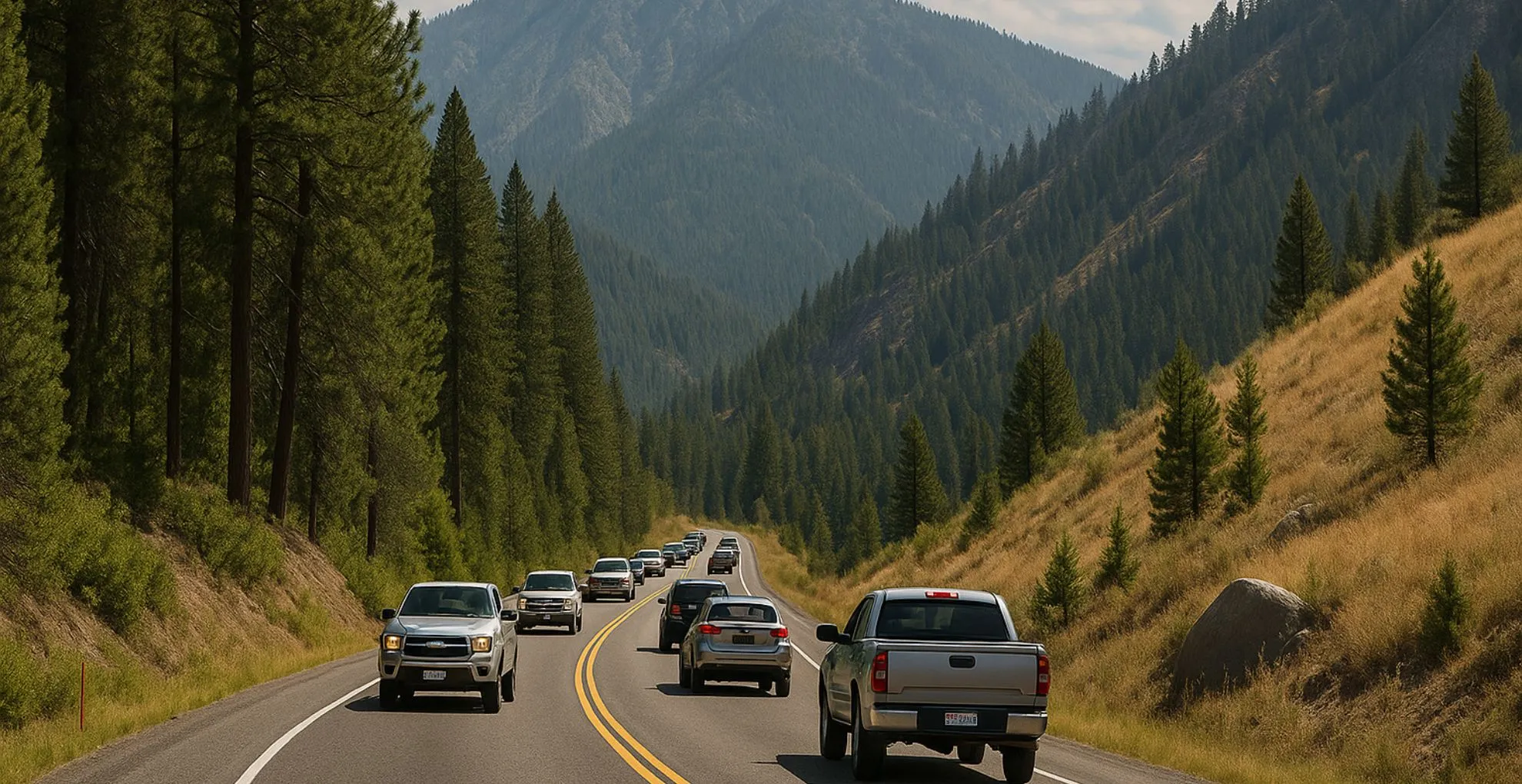
Debunking 3 Common Myths: What Alternate Routes Really Mean for Idaho Communities
Table of Contents
In Idaho, roads are more than infrastructure; they’re lifelines. They carry our food, connect our communities, and keep tourism flowing through every season. However, when it comes to adding alternate routes, discussions often become clouded by fear and misinformation.
Let’s clear the air.
At Pathways Forward Idaho, we believe infrastructure decisions should be made with facts, not fear. Below, we tackle three of the most pervasive myths about alternate routes—and reveal what the latest evidence shows.
Myth #1: “Alternate routes will bring traffic into small towns and ruin the peace.”
This is a common concern in rural and scenic communities. But alternate routes aren’t built to funnel traffic—they’re designed to do the opposite.
Their purpose is to divert high-volume, pass-through traffic away from local roads. According to ITD’s Fiscal Year 2024 Annual Report, major corridor investments, including strategic routing and bypasses, save lives and improve the efficient movement of goods statewide.
Here in Idaho, we use detailed traffic modeling and community engagement to ensure new routes steer clear of town centers. Whether the traffic is freight, tourism, or emergency response, the goal remains the same: move traffic around, not through, our towns.
Quick Facts:
- Alternate routes reduce in-town truck volume and heavy freight congestion.
- Bypass-style designs protect historic districts and local infrastructure.
- Emergency response times improve when main arteries aren’t congested.
Myth #2: “New roads will destroy Idaho’s small-town character.”
Resounding concern. But modern planning takes community character seriously.
Design strategies such as scenic overlays, native landscaping, quieter pavement, and wildlife corridors are now common practice in alternate-route projects. These align with ITD’s 2024 commitment: “Your Safety. Your Mobility. Your Economic Opportunity”.
That means roads don’t bulldoze charm—they buffer and support it. Alternate routes often include:
- Scenic protection zones and environmental reviews
- Low-noise pavement and visual integration measures
- Collaborative landscaping plans shaped by local input
The result? Alternate routes that complement, not compromise, small-town identity.
Myth #3: “These projects are rushed and don’t consider long-term impact.”
This is far from true. Idaho’s infrastructure projects follow multi-year, multi-phase planning, including public comment periods, environmental reviews, safety analyses, and long-term budgeting.
Data from ITD shows a record delivery of highway improvements in 2024, funded through programs like the Transportation Expansion and Congestion Mitigation (TECM) bond, supporting decades-long strategic infrastructure. And at the federal level, USDOT’s 2024 National Roadway Safety Strategy outlines that 10 consecutive quarters of declining roadway fatalities resulted from sustained investment in safety countermeasures, precisely what alternate routes help provide.
Alternate routes aren’t quick fixes—they’re durable investments grounded in data, public input, and intelligent planning.
Why Alternate Routes Matter for Idaho’s Future
- Safety & Resilience: Secondary routes ensure access during wildfires, rockslides, or crashes.
- Economic Growth: New corridors bring visitors—and revenue—to more communities.
- Quality of Life: Local streets become quieter, safer, and more welcoming.
Let’s Build the Idaho We Want to Drive
The concerns around alternate routes are understandable, but they deserve honest answers. With transparent planning, modern design, and local participation, these routes don’t harm towns—they protect them.
If you want to be part of the conversation, we invite you to contact us and learn how these projects are shaped by your feedback, engineering expertise, and Idaho values. Explore more insights on smart, community-focused infrastructure at the Pathways Forward Idaho blog.
